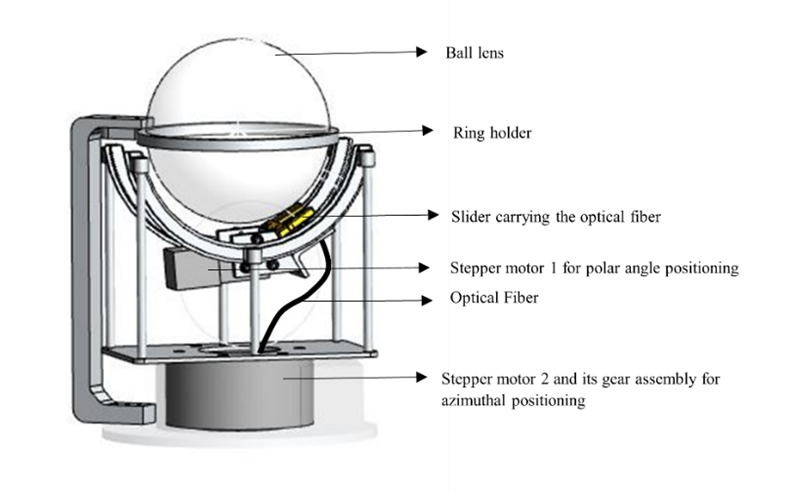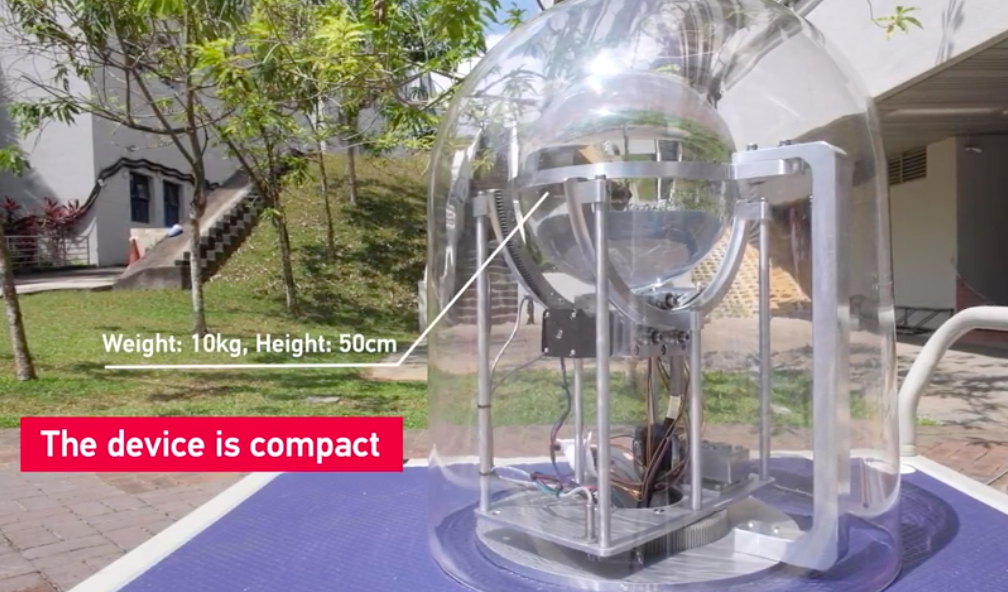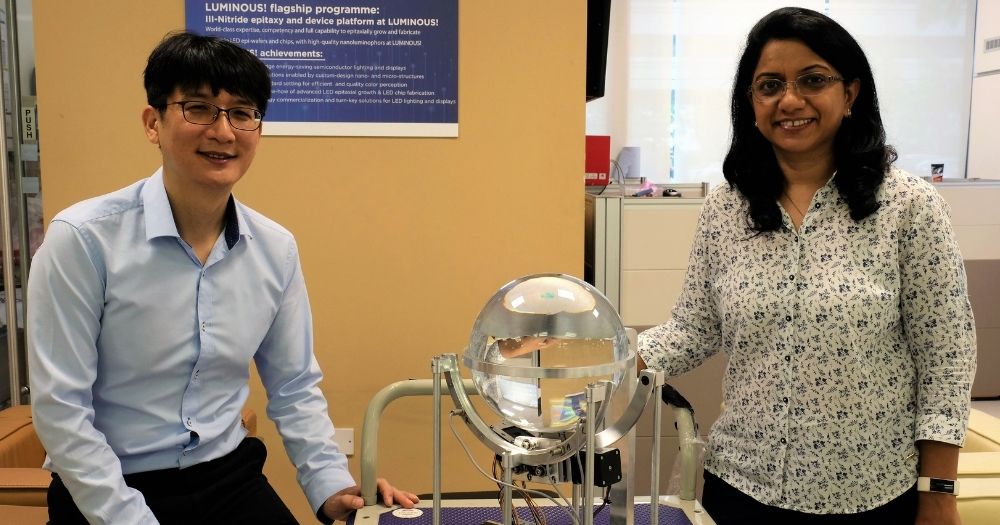Taking inspiration from the magnifying glass, Nanyang Technological University (NTU) researchers Yoo Seongwoo and Charu Goel have created a "smart" device that illuminates underground spaces using harvested sunlight.
The device can potentially reduce our dependence on conventional light sources like LED bulbs, moving a step towards sustainability.
Made up of an acrylic ball, a plastic optical fibre and computer chip motors, the prototype of the device stands 50cm tall and weighs 10kg.
An additional 3mm-thick transparent tough plastic forms a dome around the device to protect it from environmental factors such as dust and ultraviolet light.
 Design of the ‘smart’ device to harvest daylight. Image courtesy of NTU.
Design of the ‘smart’ device to harvest daylight. Image courtesy of NTU.
 Screenshot via NTU video.
Screenshot via NTU video.
How it works
In the day, rays of sunlight pass through the acrylic ball of the device and converge to a focused point.
The light energy is collected by the fibre cable through one end and transported to the opposite end which then emits light to underground spaces.
Tracking the sun's position, the computer chips help the motors align the fibre's light collecting end to optimise light collection.
In low light conditions, a LED bulb placed next to the fibre’s emitting end acts as a back-up and will light up automatically. This will ensure underground spaces are constantly illuminated by the device.
Sitting above ground, the device is also intended to function as a streetlamp at night.
 The ‘smart’ device to harvest daylight when installed on top of a lamp post pole. Image courtesy of NTU.
The ‘smart’ device to harvest daylight when installed on top of a lamp post pole. Image courtesy of NTU.
Could be better than LED bulbs
Besides being more environment-friendly, this device was found to have higher luminous efficacy than LED bulb. That means it is more than two times brighter than commercially available LED bulbs.
Goel said, “The luminous efficacy of our low-cost device proves that it is well-suited for low-level lighting applications, like car parks, lifts, and underground walkways in dense cities."
With increasing demand for underground spaces, the invention of such device can help reduce the usage of electricity-powered LED bulbs.
“In Singapore, authorities are looking at the feasibility of digging deeper underground to create new space for infrastructure, storage and utilities. Demand for round-the-clock underground lighting is therefore expected to rise in the future,” the press release stated.
Additionally, the device is compact and light-weighted. Therefore, it is suited for use in dense cities with space constraints.
"This would make it convenient for our device to be incorporated into existing infrastructure in the urban environment," said Yoo.
To continue to improve efficiency and sustainability of the device
As the device is made of off-the-shelf and readily accessible materials, it can be easy to scale to proportion and demand.
The researchers are currently working with a Singapore-based design focused company called Technolite to see how to make the device even more sustainable and efficient.
Top image by NTU
If you like what you read, follow us on Facebook, Instagram, Twitter and Telegram to get the latest updates.
